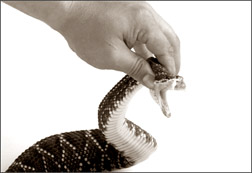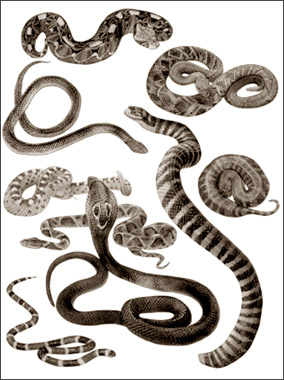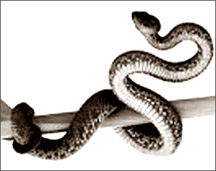|

[email protected]
Poisoning in Sri Lanka: A major health concern
by Prof. Ravindra Fernando, Head, National Poisons
Information Centre, National Hospital of Sri Lanka
 Considering the high incidence of morbidity and mortality from
poisoning the Ministry of Health has declared the week starting from May
14 as the 'National Poisons Prevention Week.' Many activities have been
planned to create awareness on prevention of poisoning and to educate
the general public on first aid for poisoning. Considering the high incidence of morbidity and mortality from
poisoning the Ministry of Health has declared the week starting from May
14 as the 'National Poisons Prevention Week.' Many activities have been
planned to create awareness on prevention of poisoning and to educate
the general public on first aid for poisoning.
Sri Lanka and many other developing countries in the world have been
made aware of the importance of poisoning as a major health concern in
the last few decades. With the improvement of socio-economic status,
literacy and health services, especially preventive health services,
morbidity and mortality from communicable diseases have shown a decline.
However, morbidity and mortality from non-communicable diseases such
as coronary heart disease, diabetes mellitus, hypertension, trauma,
accidents and poisoning are increasing.
In Sri Lanka, the leading cause of hospital deaths is ischaemic heart
disease or coronary heart disease. Poisoning was the sixth leading cause
of death in state hospitals in 2005.
Pesticides are the commonest chemical substances causing poisoning.
This is not surprising when one considers the fact that agriculture is
the most important sector in Sri Lanka's economy, employing over half
the labour force.
 The insecticides, organophosphates and carbamates are the most widely
used insecticides in Sri Lanka. They have caused 892 deaths in 2005.
Other pesticides such as paraquat, chlorophenoxy compounds and
glyphosate have caused 378 deaths. The insecticides, organophosphates and carbamates are the most widely
used insecticides in Sri Lanka. They have caused 892 deaths in 2005.
Other pesticides such as paraquat, chlorophenoxy compounds and
glyphosate have caused 378 deaths.
Poisoning with therapeutic drugs, such as paracetamol, salbutamol,
aspirin and diazepam, the major concern in developed countries in the
West, is also increasing in Sri Lanka.
Other poisons include plants such as Kaneru and Niyangala, industrial
chemicals, household chemicals such as disinfectants and cleaners,
cosmetics and substances used for abuse.
Suicide rate, which was the highest in Sri Lanka in 1995, has shown a
decrease in the last decade due to multiple reasons. However, Police
statistics show that 2,941 men and women have committed suicide by
taking poisons in 2005. Of this, 2,586 took pesticides.
Pesticide poisoning caused 150 deaths in Kurunegala District and 128
deaths in Badulla District.
It is tragic that these suicide attempts are cries for help, or due
to momentary depression or anger, or to scare others such as a boy
friend or parents. Almost all of them want to survive and go home once
in hospital.
Admissions from snake bites are also increasing. A couple of decades
ago those living in rural agricultural districts did not believe that
western drugs are effective for snake bites.
However, hospital admissions from snake bites showed a tremendous
increase mainly because of the public education campaigns and
publications of the Health Education Bureau of the Ministry of Health
and the Sri Lanka Medical Association.
In 2005, 36,727 patients were admitted to state hospitals and there
were 134 deaths, compared to 27,251 admissions and 164 deaths a decade
ago.
The five highly venomous snakes in Sri Lanka are cobra, Russell's
viper, common krait, Ceylon krait and the saw-scaled viper.
 Accidental poisoning accounted for 33% of enquiries to the National
Poisons Information Centre. Most are accidental poisonings at home
involving children. It is essential to keep all drugs, pesticides and
chemicals in locked cupboards or containers so that children cannot have
access to them. Accidental poisoning accounted for 33% of enquiries to the National
Poisons Information Centre. Most are accidental poisonings at home
involving children. It is essential to keep all drugs, pesticides and
chemicals in locked cupboards or containers so that children cannot have
access to them.
An unusual case of accidental poisoning was an incident of poisoning
of about fifty men, women and children in an estate in the Nuwara Eliya
district some years ago, where the management of the estate decided to
spray an area with a weedicide, to get rid of weeds to replant tea.
A few hours after spraying, the mainly women and small children
living in the line rooms became ill. The poisoned patients were admitted
to Nawalapitiya and Kandy Hospitals.
What led to this unusual incident of poisoning was quite clear. There
was a small stream of water in the sprayed area and this stream supplied
the main water tank providing water to the families in the line rooms.
A few hours after spraying the families started using contaminated
water and became ill. Fortunately, all patients recovered as the
chemical was diluted before entering the body.
Other circumstances of poisoning are occupational poisoning and
homicidal poisoning.
Homicidal poisonings, though rare, are reported. A case of homicidal
poisoning, where the mother and two daughters died by eating a cake
laced with an insecticide was reported some years ago.
There are instances where patients have taken drugs to procure
abortions. In one such case, an unmarried young girl, a university
student, died of chloroquine poisoning, which she took to procure an
abortion.
One specific action that can be taken is to improve the treatment
facilities in State hospitals. Lack of intensive care facilities is a
major concern.
The Presidential Task Force on formulation of a National Health
Policy suggested several in 1993 to reduce the morbidity and mortality
from pesticide poisoning. Some of these measures can be used to prevent
poisoning from other chemicals as well.
* Strengthening the implementation of the provisions under Control of
Pesticides Act by appointing Public Health Inspectors as authorized
officers with powers of inspection, obtaining samples, etc.
* Undertaking information, education and communication programmes for
pesticide users, the general public, agricultural extension workers,
health workers, mass media, producers and suppliers. Adverse effects of
pesticide use, safe handling methods in transportation and application
of pesticides must be emphasized.
* Ensuring the use of safety measures and protective equipment
against accidents and pesticide poisoning through an appropriate pricing
and distribution mechanism.
* Encouraging community involvement and popular participation in
surveillance of the use of pesticides and safety measures.
* Strengthening the National Poisons Information Centre.
Strengthening the National Poisons Information Centre can provide an
efficient 24-hour service for healthcare professionals and doctors, a
laboratory back up service to analyse blood, urine and stomach contents
to assist doctors in the management of poisoned patients and facilities
to supply antidotes to hospitals.
These activities if properly and efficiently implemented can help to
reduce the rising incidence of morbidity and mortality from poisoning.
Morbidity and mortality from poisoning will increase causing a
tremendous burden to health services in the country. Poisoned patients
will require expensive antidotes. They need treatment in intensive care
units, which cost several thousand rupees per patient per day.
The cost of poisoning to the health sector has not been properly
assessed. Considering a very conservative figure of Rs. 1000 per case of
poisoning admitted, the total hospital expenditure is close to a
staggering 100 million rupees. Socio-economic costs may be more.
It is high time that the state and all other concerned parties take
effective action to reduce the rising morbidity and mortality from
poisoning and save thousand of young lives.
Hospital admission and deaths from poisoning - 2005
Total Hospital Admissions Deaths in Hospitals
Pesticides 18180 1270
Drugs 18325 151
Snake Bites 36861 134 Other Poisoning and Toxic Effects (e.g. Plants,
chemicals)
17686 230
Total 91052 1785
Preventing skin cancer
Will "Slip Slop Slap," a southern hemisphere campaign to prevent skin
cancer, have to be rethought?
The slogan, running especially in Australia and New Zealand, urges
the public to slip on a shirt, slop on sunscreen and slap on a hat to
protect themselves from ultraviolet (UV) rays that age skin and cause
skin cancer.
But, according to a review of the evidence published online Thursday
by the British health journal The Lancet, skin protection is a rather
more complex business than this.
Wearing thick garments - and avoiding direct exposure to the sun in
the first place - are smarter than wearing loose-weave clothing and
applying sunscreen, it says. Sun-protection strategies around the world
were assessed by Swiss dermatologist Stephan Lautenschlager of Zurich's
Triemli Hospital.
His team found that tightly woven, thick clothing made of denim, wool
and polyester offers the best protection, while cotton, linen and
acetate are far less effective.
Clothes that have shrunk after washing - and thus are denser - are
also better than materials which are wet or have been stretched or
bleached, according to Lautenschlager's team.
The review says that many people are confused or misinformed about
how to use sunscreen, such as how much to apply (a liberal dose is
recommended by far) and how frequently to reapply it.
There is not even a standardised method to measure the effectiveness
of UV blocking, it says.
This is important, given "our global, outdoor society," it says.
"The sunscreen market - crowded by numerous products - shows various
differences worldwide," it notes.
HDN
|
